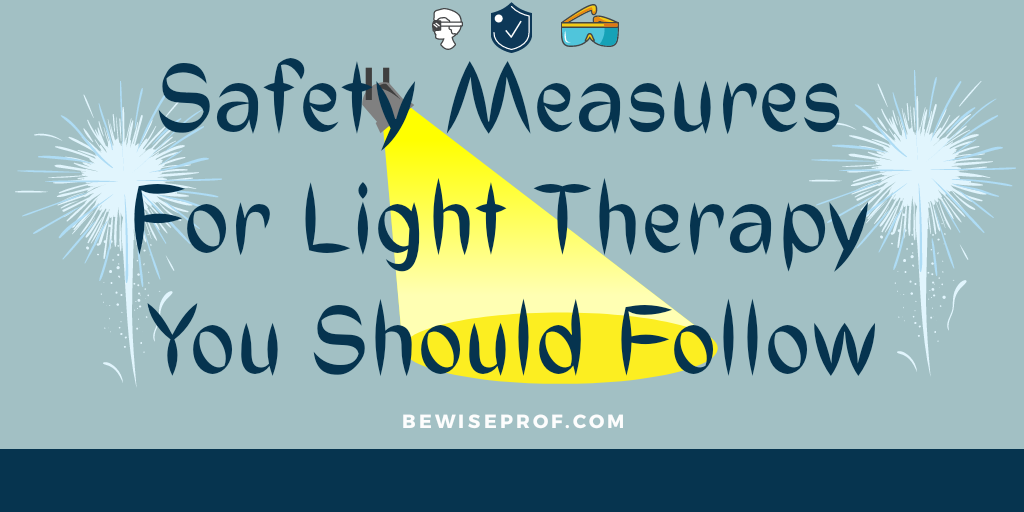Light therapies are getting famous all around the world. Before they were available to the individuals, it was used in doctor’s chambers and other organizations that provided sessions. The world has now made room for a lot of the light therapies that were available in standard LED form.
Whether you are going to use light therapy at home or at a chamber, you need to know about some of the safety measures that you must take for light therapy. It will increase the efficacy of light therapy, as well as guard you from any harmful effects.
Before we move onto our main discussion, you must know what you’re dealing with before you do it. There are a lot of light therapies out there, some completely harmless, some can affect you in ways that might have an adverse effect without you knowing.
What is Light Therapy?
Light therapy is also known as heliotherapy or phototherapy. It uses the wavelengths of light in a controlled environment, bringing out positive results. Different therapy devices are used for this purpose. The primary job of the therapy is that it treats major depressive disorder with seasonal patterns. It was previously known as a seasonal affective disorder, and SAD was its short form.
This is a kind of despair that happens during a specific time of year, usually winter. Light is also used to treat other conditions, including reduced sleeping cycles and different types of depression.
For example, Red Light Therapy uses its low-level wavelengths to penetrate the human skin without any adverse effects. What it does is, it rejuvenates the blood circulation resulting in better skin. It is even used to treat diseases like Eczema. Moreover, Red Light Therapy is FDA approved.
Did I also tell you it helps treat baldness in both men and women? The list of perks does not end when it comes to these light therapies. So, the hype surrounding light treatments is wholly justified.
How to Prepare for Light Therapy Session
Although this is not applicable to every kind of light therapy, it is also the most important one. So, simply ask your instructor whether the extra ultraviolet light from the sun would cause any harm. A lot of people discourage patients that use light therapy to expose their skin to the sun and not to use sunbeds.
Psoralen makes you sensitive to ultraviolet light. If you thought going out on the sun was terrible, then this is worse. So, it is highly advised that if your instructor asks you to, you should avoid foods containing natural psoralen. Don’t eat carrots, celery, figs, parsnips, and parsley at least 2 hours before going to the session.
Again, it is not applicable to everyone. But, just to be safe, ask for advice on this from your photo therapist. Or just check the instructions of your device if you are doing it from home. Products like creams, perfume, lotions, ointments, or anything that has the slightest of scented perfume, avoid them for your own good. For example, if you are going to use Red Light Therapy, you won’t need to follow this instruction.
It might come off as something that I don’t have to tell you. It might seem like a no-brainer. But, for the sake of your safety, I’m going to say this anyway. Please, do not cut your hair during the therapy as it might expose your hair’s skin to the light more than its needed.
Safety Measures
The main exemptions for the use of light therapy are disorders that involve the retina of our eyes and the application of photosensitizing medications. People with a record of skin cancer and systemic lupus erythematosus should likewise evade this sort of therapy.
Medical phototherapy, also called light therapy, demands specific technical equipment and trained staff. But for LED treatments, this is not a requirement. Lavish color tubes can end in sunburns if the light doesn’t have a diffuser. Its job is to strain out the ultraviolet beams. This is the reason why lamps that are used in advanced light therapy filter out ultraviolet light at a high degree and are therefore estimated to be more harmless.
When photodynamic treatment is attempted, biological hazards such as non-ionizing emission generated by the light-emitting device and chemical risks such as unwanted susceptibility to photosensitizing agents administered to patients must be recognized for safe use by the healthcare expert.
Personal Protective Equipment or PPE for photodynamic treatment should cover eye and skin shields from chemical elements and non-ionizing radioactivity. Engineering and administrative machine commands that are approved for reliable use must be strictly obeyed.
